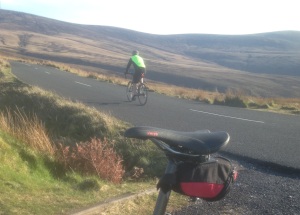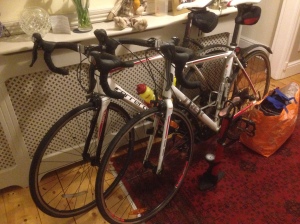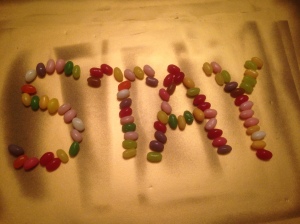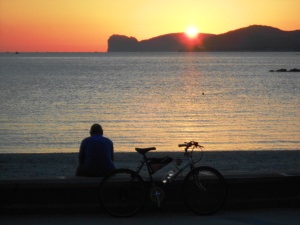So let’s start with a question. Do you think there is anything we can learn from the dreaded section of the bookshop called ‘sports books’? Now if you hate sport – and yes, I know there are some people for whom this is a badge of honour – chances are you jumped from the ‘Health’ shelves to ‘Travel’ without a sideways glance. I can, quite honestly, understand this. I am not a ‘sports nut’ (though my wife might disagree) and some sports don’t really interest me at all. For example, horse racing. I mean they just keep running around in circles with little guys sitting on top with whips. But hold that thought…
As a long time reader, I genuinely feel that there are only two categories of sports books. Bad to average, and great. But IF you find one in that latter category then – I would suggest – there is a high probability of finding an absolute gem that will stay with you for ever. And which can inform your thinking, educate you with a historical context, and (whisper it) teach you something very relevant no matter where you are coming from.
So hereunder is a personal shortlist of GREAT books that just happen to be sports based. They reflect a rule of thumb. Books ‘written’ by great sports heroes are invariably crap. Their ghost-writer does his/her best, but always fails. Also, barring a vindictive personality, the ‘celeb’ will never say anything bad about a sporting peer. E.g. ‘X was a really poor passer or the ball, selfish, petulant and had a terrible body odour problem’. This never, ever happens. What you will get is padding, the tragedy of periodic sporting injury, and endless political soft-peddling. You owe it to yourself and your limited time on this planet to avoid these books like the plague. Instead of which, reach for these gems (in no particular order) and feel your spirits soar…
The Boys in the Boat by Daniel James Brown
This is a life-affirming story about a disparate bunch of kids from Seattle who survived the great depression, became a rowing team of great renown and represented USA in Hitler’s Olympics in Berlin 1936. What do you get from this book? Well where to begin? Highpoints are the value of teamwork, amazing descriptive and engaging writing about how a top-end rowing boat is constructed, triumph over poverty, brilliant historical context, the most political Olympics ever, and how to survive a dysfunctional family. Impossible to put down. Won awards and rightly so. Moral of the story? Teamwork works. And you’ll have to read the book to find out what ‘the swing’ is.
Slaying the Badger by Richard Moore
The story of how Greg Lemond and Bernard Hinault slugged it out for the 1986 Tour de France. For the uninitiated, it’s a very long bike race, featuring killer mountains. The complex story is that the prior year Lemond ‘let’ Hinault win. The payback was to be reversed the following year by mutual consent but Hinault didn’t really see this as a watertight contract. An amazing cat and mouse game ensued. There’s a mostly happy ending (spoiler alert). So what’s the moral of the story? Get every deal in writing and hire a good lawyer. This book is so good I read it in one single night while sitting in an A&E department waiting to have my suspected fractured skull x-rayed. I was in the priority queue. But if it had moved as fast as it was supposed to I’d probably have finished the book anyway before going home at 5am. It’s that good.
Seabiscuit by Laura Hillebrand
A surprisingly engaging story about a scrawny looking racehorse and his bandy legged jockey during America’s great depression. Or maybe the horse was bandy legged and the jockey scrawny, it’s been a while since I read it. What comes out of it is how an unlikely combination can, with preparation, guts, persistence and a bit of luck become an icon to a nation that needed heroes and hope. Absolutely brilliant emotion-laden writing with an unerring sense of time and place. And remember this book is recommended by a guy that does not see the point of horses. At all.
Moneyball by Michael Lewis
In the main, Michael Lewis writes great books about high finance and the stock market. Surprisingly he also wrote ‘The Blind Side’ (American football) and this brilliant book. The theme? By careful and exhaustive analysis of baseball statistics you can build a winning team for half-nothing. So in effect it’s a love story about big data and analytics, primarily about a crazy baseball coach who has utter belief in the power of statistics. He buys ‘odd-ball players’, knits them into a winning team, and at the end refuses to go to a major club for megabucks because he believes in the guys who believed in him. I almost cried at the end of the movie (for once as good as the book, despite Brad Pitt being in it). And let me say I have NO clue how baseball works. Which shows that great books don’t have to be fully understood. The lessons? Back yourself, believe in the facts, build a team of people who believe as much as you do, and have the integrity to pass up a big pay-day to reward the people that stuck by you in tough times. Who wouldn’t cry?
Into Thin Air by Jon Krakauer
I have to admit that it’s debatable if this is actually a book about sport. Albeit mountain climbing could – I guess – be regarded as a sport of sorts. And I love books about climbing and the extreme discipline and courage that these people demonstrate, so it’s squeaking into my top five. What this gripping book shows is that on a day when eight people died on Everest in 1996, the failure of many of them to prepare adequately contributed greatly to their downfall. A number of them also did NOT know when to stop and head downwards – as the song said ‘your mind’s writing checks that your body can’t fill’. The end result was tragedy, death and flashes of heroism among the survivors, some of whom rescued many of their fellow climbers. The lessons I look from it were the need to prepare, to have a plan that can adapt, and – slightly controversially – to know when to quit gracefully. And if anyone thinks climbing mountains is glamorous, this is the book to rid you of that notion.
I think I’ll stop there, though I have enjoyed writing this so much I think there will be a part 2 before long. It’s no coincidence whatsoever that all these books are either a successful movie already or ‘there’s one at the planning stage’. And the key messages? Sport can teach us about teamwork, mastery, hard work, decision-making, focus, trust, determination, persistence and integrity. Not all books about sport can capture that. But these ones do.
So if you read this, and you feel you have a worthy contender that should be on my reading ‘stack’, feel free to tell me about it. Game on.




